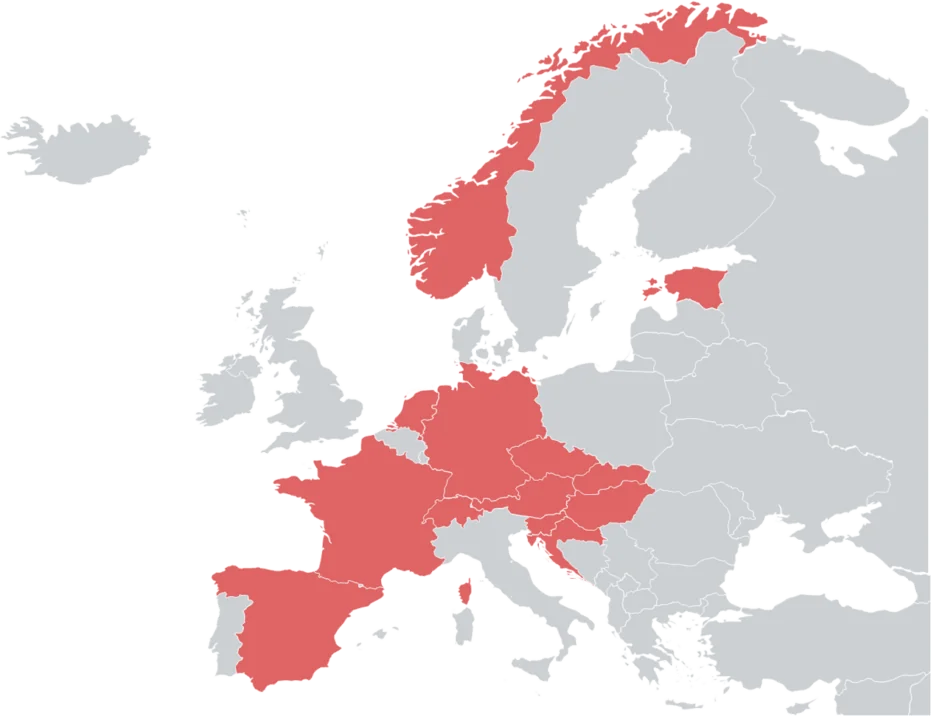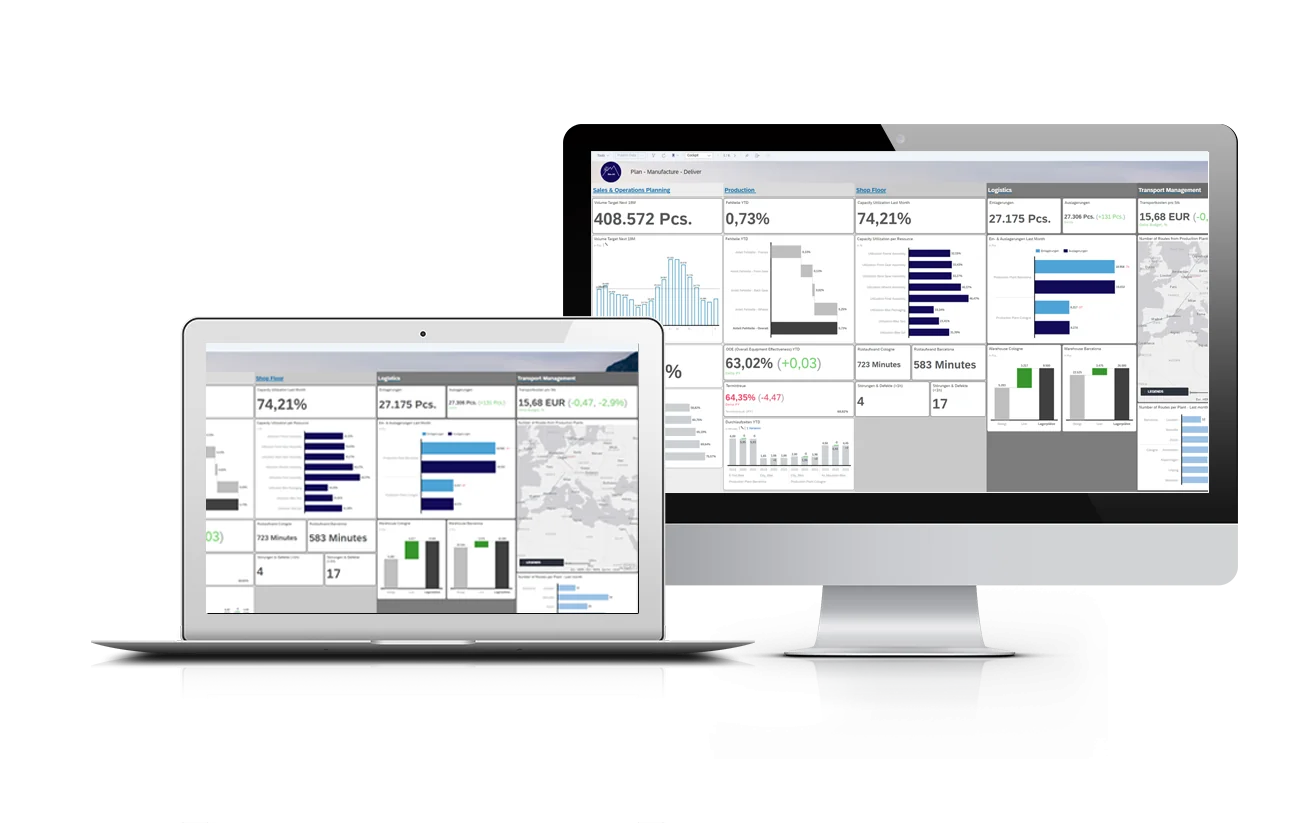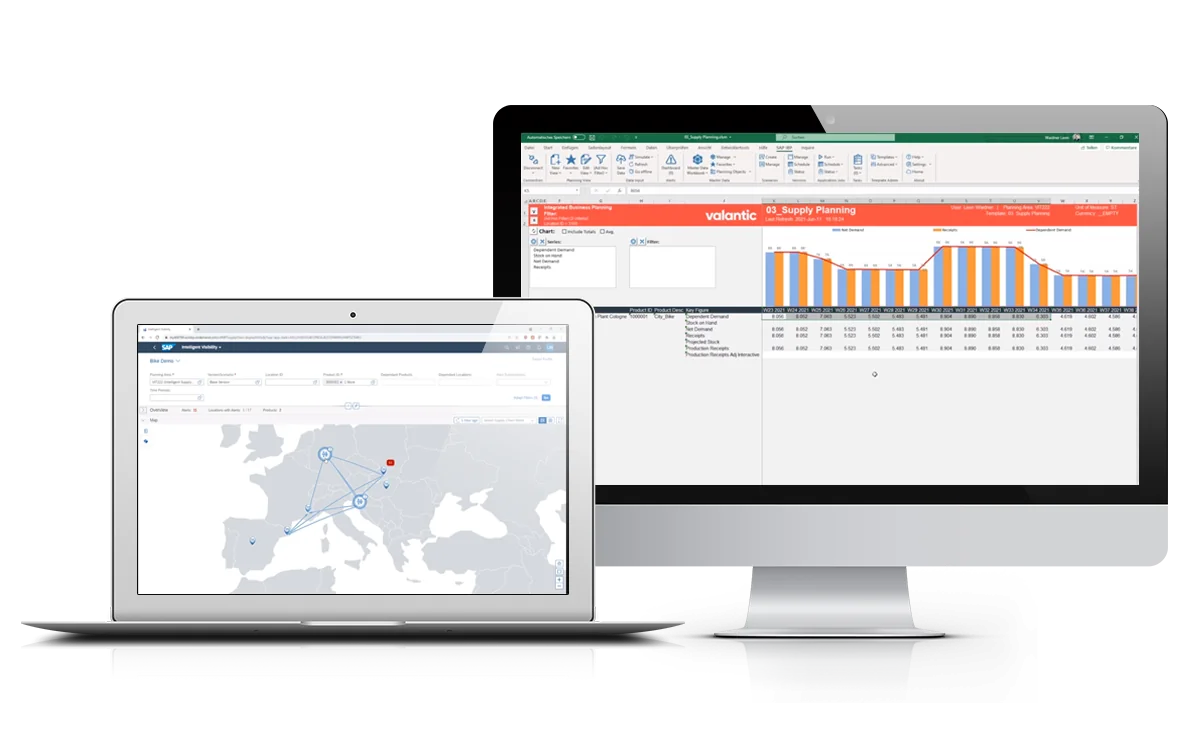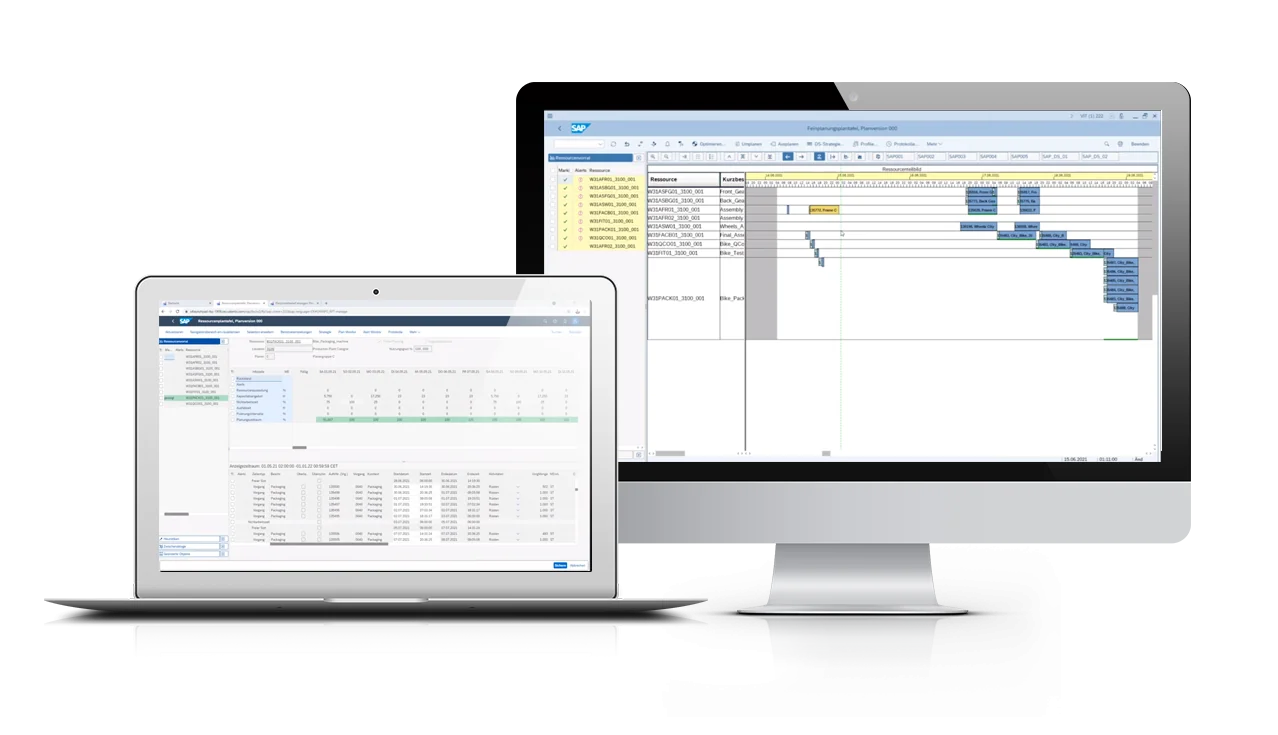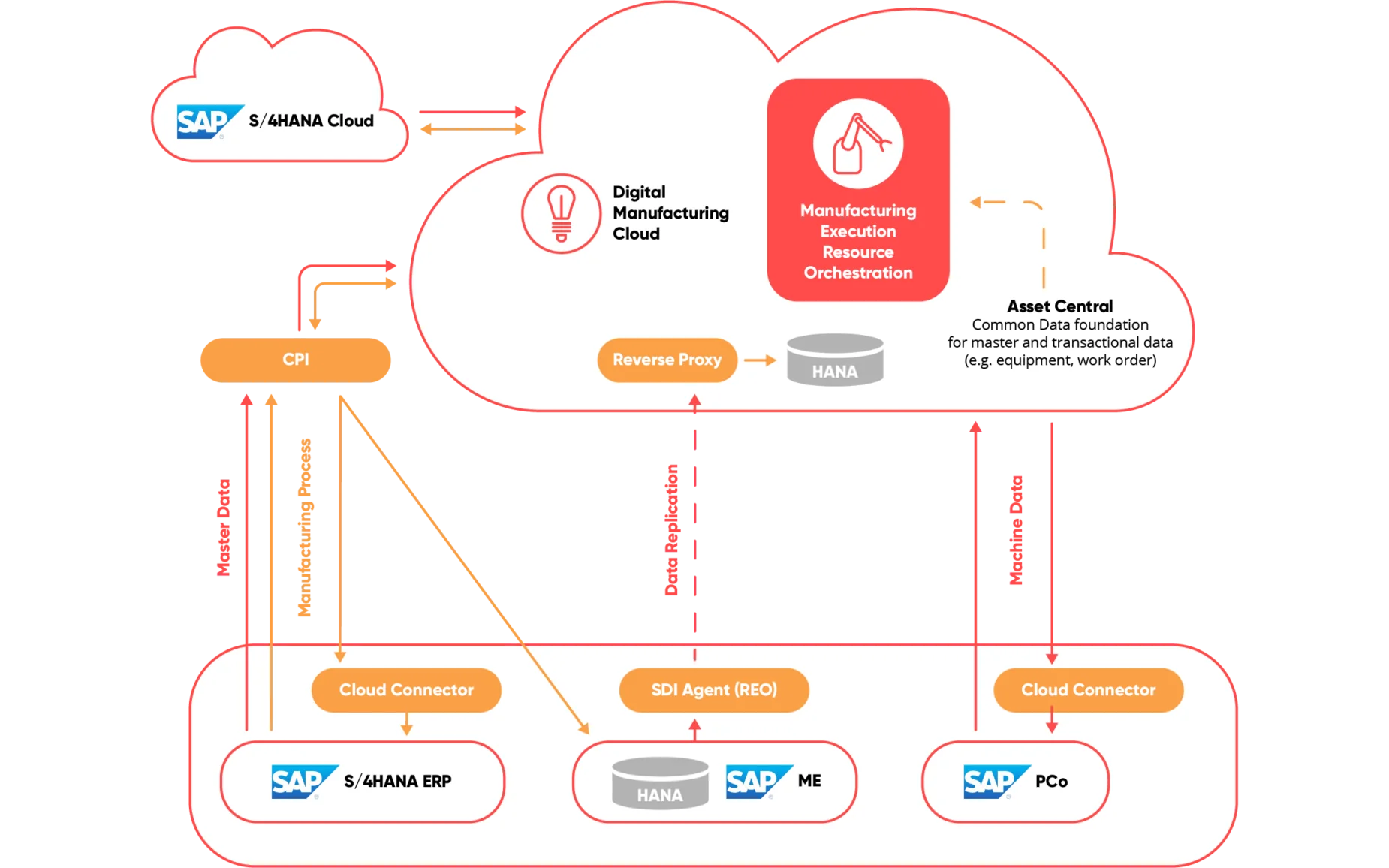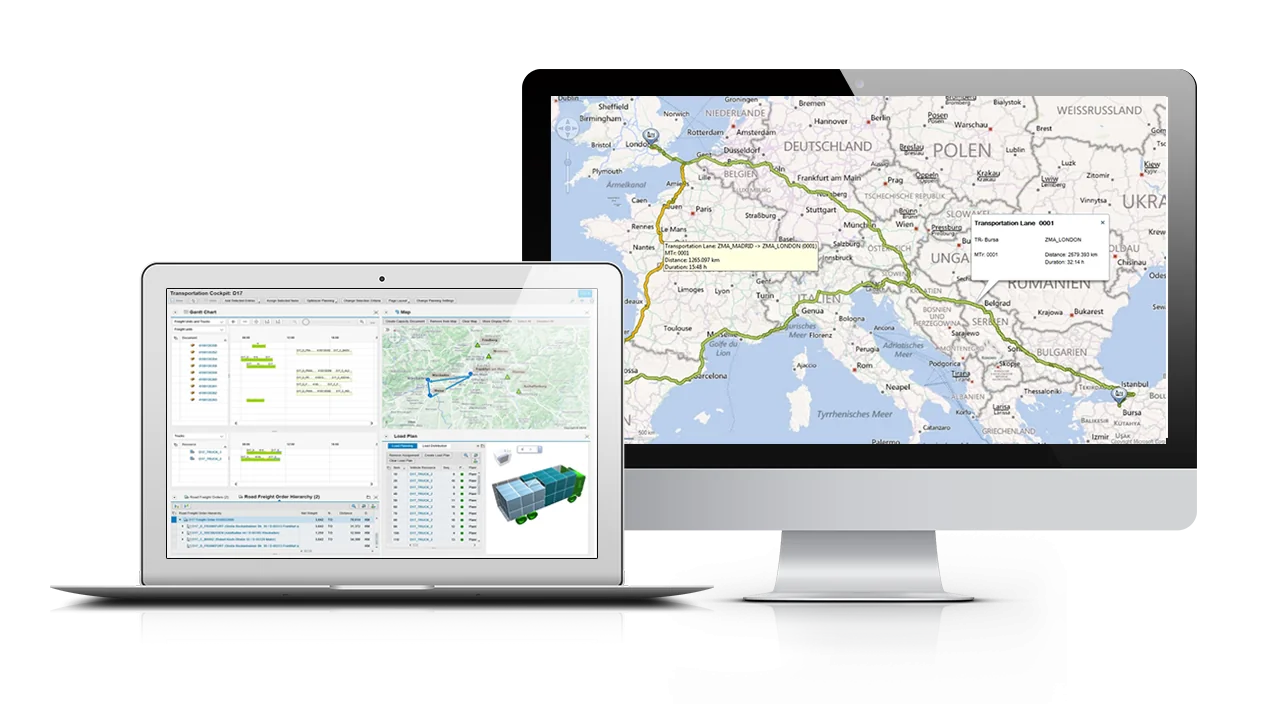At the end of the value chain are transport and delivery. Bike AG’s bicycles can be taken from the production plant to the dealers or directly to customers via online shopping. With SAP TM (Transportation Management), all goods movements, whether order, purchase order, or transfer, can be planned and consolidated. The “Transportation Cockpit” offers extensive possibilities for planning transports in detail, assigning them to transport service providers, and tracking them. The SAP Logistics Business Network (LBN) offers the opportunity to work easily with transport service providers without having to implement complex interfaces. SAP LBN supports all common, transport-relevant processes, from procurement and document management to planning of gate assignment and resolving differences in invoicing.
The load planning is done completely automatically and visualized in 3D, the planned routes are displayed on a map and can be tracked in real time. SAP TM freight cost management offers the opportunity to fully map contracts with transport service providers, including all freight rates, so that the transport costs are automatically determined precisely and are available for SAP invoice verification. This way, Bike AG’s bikes reach their destination reliably.

